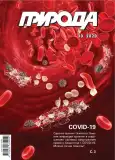Miniature Pigs — Human Companions
- Autores: Bystrova N.A1
-
Afiliações:
- Edição: Nº 10 (2020)
- Páginas: 49-54
- Seção: Articles
- URL: https://journals.eco-vector.com/0032-874X/article/view/631079
- DOI: https://doi.org/10.7868/S0032874X20100063
- ID: 631079
Citar
Texto integral
Resumo
The new breeds of miniature pigs have emerged due to the new direction of selection, associated not only with the requirements for the animal weightand height, but also, with its behavior. This article analyzes the behavioral characteristics of the species in general and those that developed in theprocess of domestication during the last 10 000 years provide a new system of interspecific relationship with humans. Based on a review of existingethological research on the abilities of typical companion animals (dog, cat, and horse), we state the requirements for pet behavior, which allows a person to perceive an animal as a family member. Although the experiments do not provide a complete picture, it is possible to identify such prerequisitesof pigs as successful mastering of skills like recognition of humans and their images. Difficulties in understanding human gestures are associated withthe anatomical features of a pigs head and face, however they are compensated by attention to persons spatial position and the preference of familiarpeople. The latter though creates an additional difficulty in the form of guarding the indoor place from strangers. The inevitable increasing selectionpressure on behavior is considered from the perspective of the destabilizing selection theory. Suggestions about the future changes in appearance, physiology, and behavior of miniature pigs are provided.
Palavras-chave
Bibliografia
- Owens N., Grauerholz L. Interspecies parenting: how pet parents construct their roles. Humanity & Society. 2019; 43(2): 96–119.doi: 10.1177/0160597617748166.
- Larson G., Albarella U., Dobney K. et. al. Ancient DNA, pig domestication, and the spread of the Neolithic into Europe. PNAS. 2007;104(39): 15276–15281. doi: 10.1073/pnas.0703411104.
- Рыбакова А.В., Ковалева М.А., Калатанова А.В. и др .Карликовые свиньи как объект доклинических исследований. Международный вестник ветеринарии. 2016; 3: 168–176. [Rybakova A.V., Kovaleva M.A., Kalatanova A.V. et. al. Mini pigs as the object of pre-clinical studies. International Bulletin of Veterinary Medicine. 2016; 3: 168–176. (In Russ.)]
- Hare B., Plyusnina I., Ignacio N. et. al. Social cognitive evolution in captive foxes is a correlated by-product of experimental domestication. Curr. Biol. 2005; 15(3): 226–230. doi: 10.1016/j.cub.2005.01.040.
- Варга А., Федорович Е.О психологической роли домашних питомцев в семье. Вестник Московского государственного областного университета. Серия: психологические науки. 2009; 3: 22–34. [Varga A., Fedorovich E. Pet’s psychological roles in the family. Bulletin of Moscow Region State University. 2009; 3: 22–34. (In Russ.).]6.Tanida H., Nagano Y.The ability of miniature pigs to discriminate between a stranger and their familiar handler. Appl. Anim. Behav.Sci. 1998; 56(2–4): 149–159. doi: 10.1016/S0168-1591(97)00095-6.
- Koba Y., Tanida H.How do miniature pigs discriminate between people? Appl. Anim. Behav. Sci. 2001; 73(1): 45–58.doi: 10.1016/S0168-1591(01)00106-X.
- Koba Y., Tanida H.How do miniature pigs discriminate between people? The effect of exchanging cues between a non-handler and their familiar handler on discrimination. Appl. Anim. Behav. Sci. 1999; 61(3): 239–252.
- Koba Y., Morita A., Rushen J. et al.Miniature pigs’ abilities to discriminate people based on their photographs. Jpn. J. Anim. Psychol.2012; 62(1): 1–10. doi: 10.2502/janip.62.1.10.
- Баскин Л.М., Чикурова Е.А.Поведение крупного рогатого скота. М., 2014. [Baskin L.M., Chikurova E.A. Cattle behavior. Мoscow,2014. (In Russ.).]
- Крученкова Е.П.Материнское поведение млекопитающих. М., 2009. [Kruchenkova E.P.Maternal behavior of mammals. Мoscow,2014. (In Russ.).]
- Hare B., Brown M., Williamson C. et al.The domestication of social cognition in dogs. Science. 2002; 298(5598): 1634–1636.doi: 10.1126/science.1072702.
- Hare B., Tomasello M.Human-like social skills in dogs? Trends Cogn. Sci. 2005; 9(9): 439–44. doi: 10.1016/j.tics.2005.07.003.
- Udell M., Dorey N., Wynne C.Wolves outperform dogs in following human social cues. Anim. Behav. 2008; 76(6): 1767–1773.doi: 10.1016/j.anbehav.2008.07.028.
- Roberts W., Macpherson K.Theory of mind in dogs: is the perspective-taking task a good test? Learn. Behav. 2011; 39(4): 303–305.doi: 10.3758/s13420-011-0037-3.
- Udell M.A., Dorey N.R., Wynne C.D. Can your dog read your mind? Understanding the causes of canine perspective taking. Learn.Behav. 2011; 39(4): 289–302. doi: 10.3758/s13420-011-0034-6.
- Nawroth C., Ebersbach M., von Borell E. Are juvenile domestic pigs (Sus scrofa domestica) sensitive to the attentive states of humans? —The impact of impulsivity on choice behaviour. Behav. processes. 2013; 96: 53–58. doi: 10.1016/j.beproc.2013.03.002.
- Zonderland J.J., Cornelissen L., Wolthuis-Fillerup M. et al.Visual acuity of pigs at different light intensities. Appl. Anim. Behav. Sci. 2008;111(1–2): 28–37. doi: 10.1016/j.applanim.2007.05.010.
- Nawroth C., Ebersbach M., von Borell E. Juvenile domestic pigs (Sus scrofa domestica) use human-given cues in an object choice task.Anim. Cogn. 2014; 17(3): 701–713. doi: 10.1007/s10071-013-0702-3.
- Wilkins A., Wrangham R., Fitch W. The «domestication syndrome» in mammals: a unified explanation based on neural crest cell behavior and genetics. Genetics. 2014; 197(3): 795–808. doi: 10.1534/genetics.114.165423.
Arquivos suplementares











